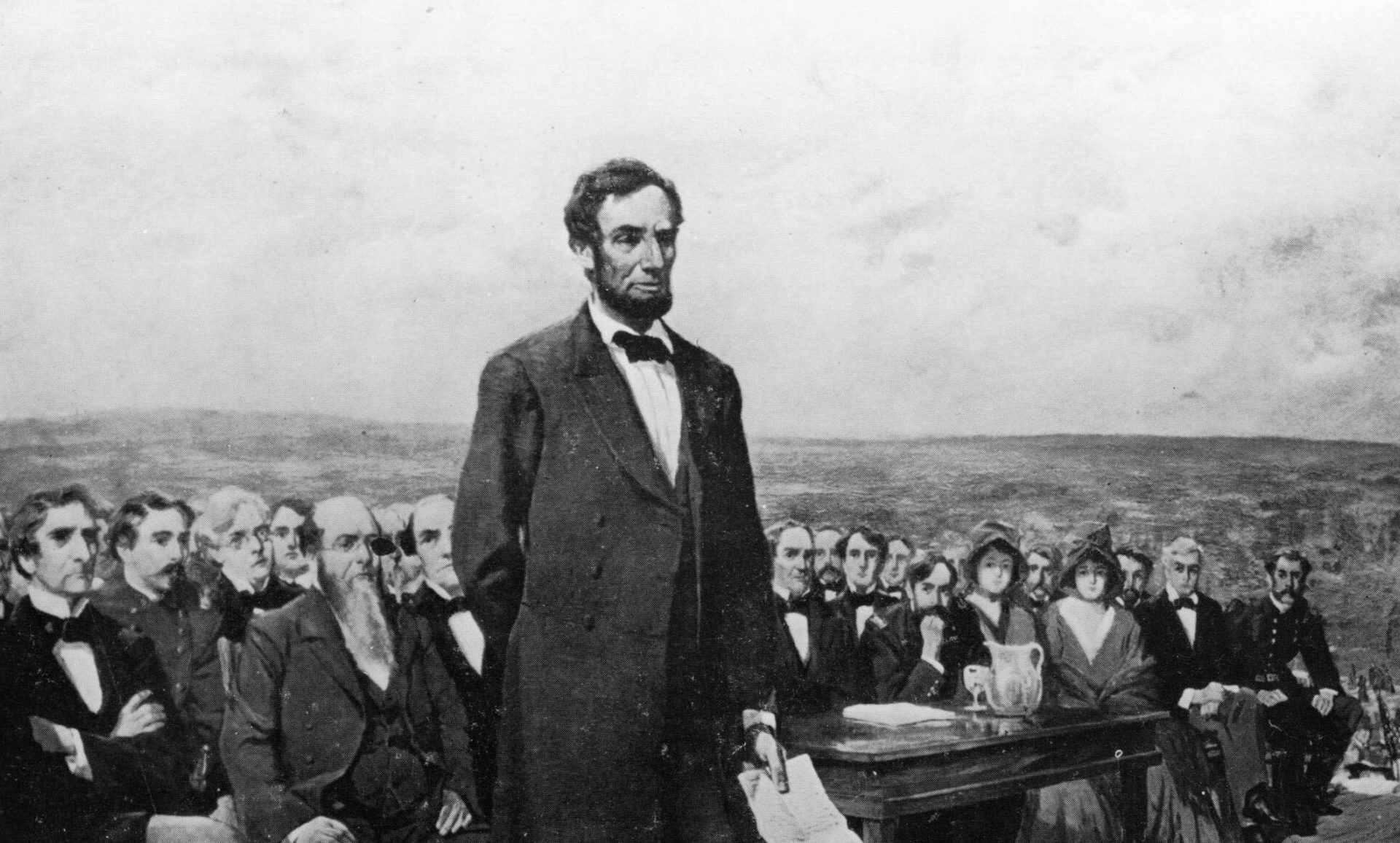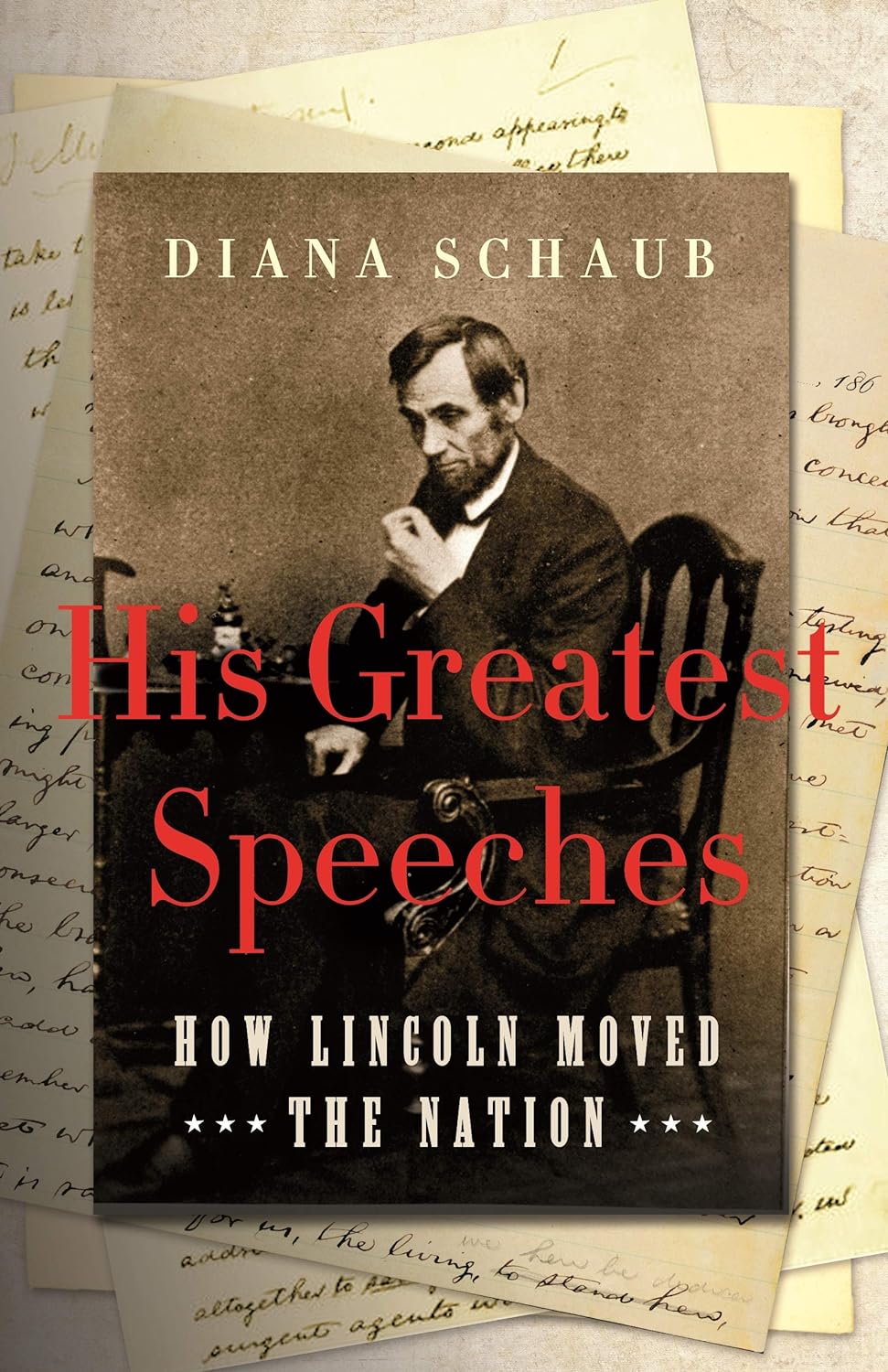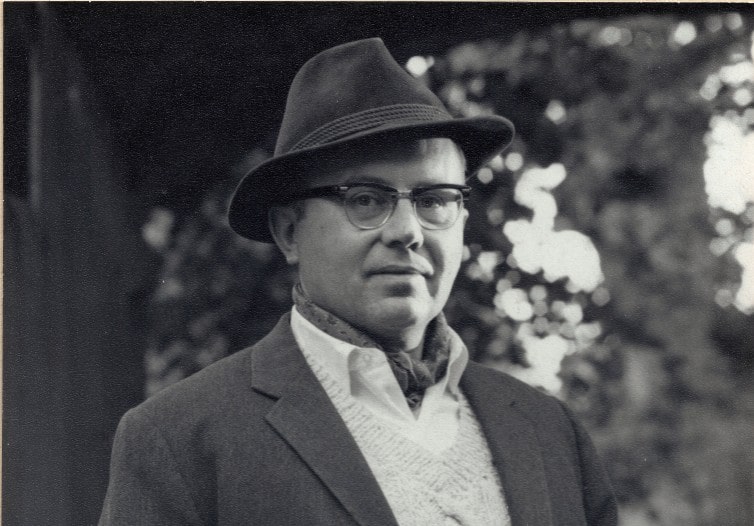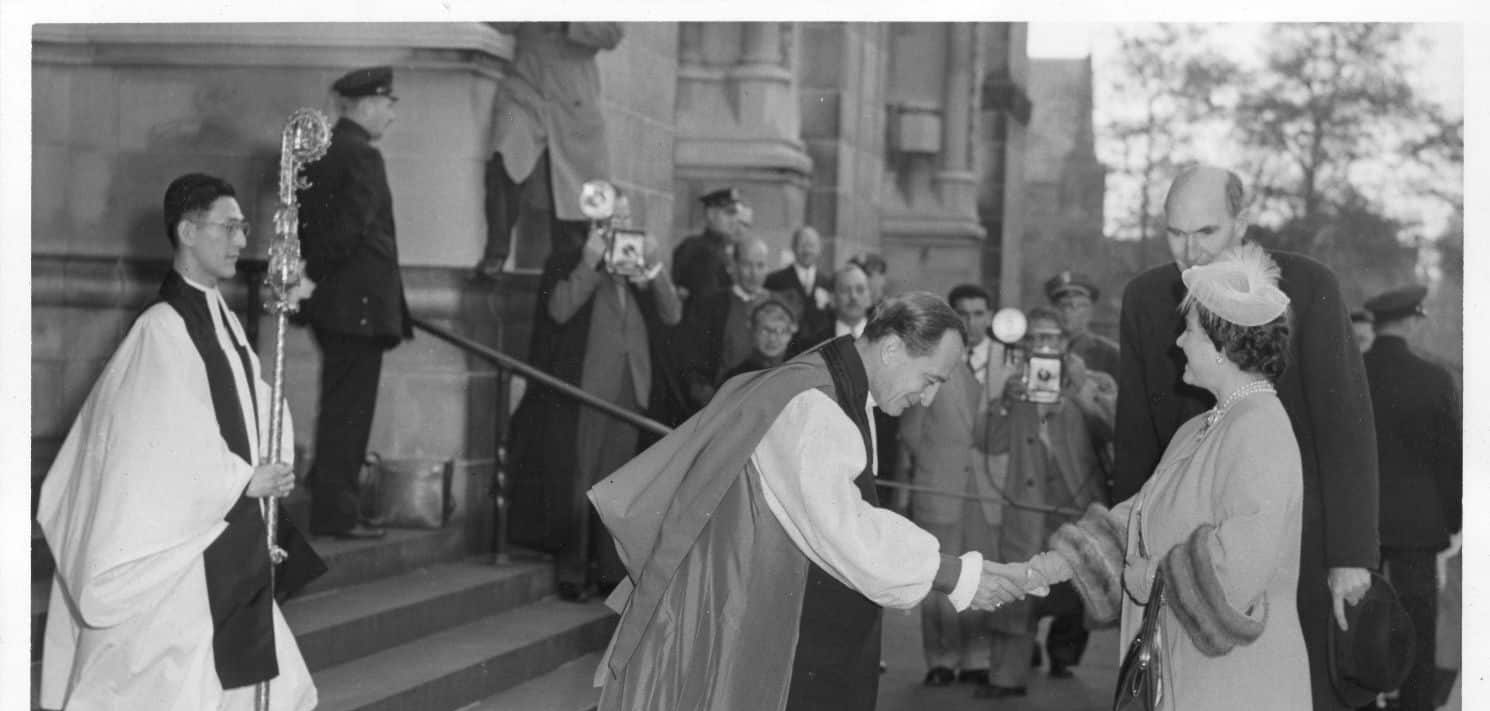On his way home from a bout of campaigning on behalf of Zachary Taylor in 1848, Abraham Lincoln briefly stopped at Niagara Falls to behold the grandeur of the rushing water. In his typical fashion, Lincoln immediately felt the need to put pen to paper, writing an unpublished fragment in which he says that anyone observing the falls is, ironically, “overwhelmed in the contemplation of the vast power the sun is constantly exerting in quiet, noiseless opperation [sic] of lifting water up to be rained down again.”
Clearly, Lincoln was not so overwhelmed as to be unable to write a few philosophical lines upon the subject. This ability remains constant with Lincoln: an endless stream of speech, carefully crafted to develop his ideas and educate his audience. He can hardly be found to be silent on any issue of his day—and when he is, it is because his silence speaks volumes. Speech was Lincoln’s primary political tool, and in using it to shape public opinion he often gave it the effectiveness of a well-promulgated law.
In His Greatest Speeches, Diana Schaub takes as her subjects Lincoln’s Address to the Young Men’s Lyceum, his Gettysburg Address, and his Second Inaugural Address. Ignoring what seems to be the publishing industry’s antipathy to close running commentaries on texts, Schaub gives each speech the treatment it deserves. She implores her reader to read and re-read each speech (the text of which is provided at the back of the book) to appreciate her line by line—and word by word—exegesis.
Schaub points out that each speech focuses on a particular moment in American history: for the Lyceum Address, it is 1787 and the principles of the Constitution; for the Gettysburg Address, it is 1776 and the assertions of the Declaration; for the Second Inaugural, it is 1619 and the role of slavery in divine providence. As Lincoln’s career goes forward, his thought goes further back to get at the root of America’s disorders.
First is the Lyceum Address, delivered in 1838 when Lincoln was but a humble state representative in the Illinois House. Its subject was “The Perpetuation of Our Political Institutions,” and it was delivered in a time wracked by mob violence. Schaub emphasizes the word “perpetuation,” noting that Lincoln did not take the route of what she calls “grumpy conservatism” in condemning modern society altogether. Rather than jettisoning the forms of our republic, Lincoln wished to reform its matter. Yet Lincoln recognized that forms are not enough. Schaub acknowledges that both Lincoln and the Founders “dissent from the modern (or Enlightenment) confidence that public benefits can reliably flow from the clever channeling of private vices.” In other words, Federalist 51 will not be enough to save our republic.
With the Lyceum Address, Lincoln tried to renew the deeper and less cerebral wellsprings of affection for the republic. To do so, he had to shape public opinion. Schaub makes clear that this is how Lincoln viewed much of his public speaking; in a debate with Stephen Douglas, Lincoln asserted that “public sentiment is everything. . . . Consequently, he who moulds public sentiment, goes deeper than he who enacts statutes or pronounces decisions.” Lincoln perceived the power that statesmen possess to shape public opinion and thus to make possible radical changes in the law. He accomplished this with his Emancipation Proclamation.
In addressing the ochlocracy of the 1830s, Lincoln first appeals to the self-interest of those who condone the violence: one day, the mob will come for you. As Schaub puts it, “Even mobocrats are not safe from mobocracy.” Yet Lincoln’s solution to lawlessness is a reverence for the laws: he urges strict obedience. Schaub contrasts Lincoln’s “hard lesson in democratic theory” with the methods of the Civil Rights movement in the next century. While Martin Luther King, Jr., advocated civil disobedience, Schaub notes that Lincoln leaves no room for it in his theory. For Lincoln, laws (even the bad ones) must be held sacred. According to Schaub, Lincoln believed that
outright nullification, no matter how nonviolent, is impermissible, whether by Thoreau’s “minority of one” or John C. Calhoun’s minority of South Carolina, which had proclaimed a “right of state interposition” against federal laws that it regarded as unjust and discriminatory. While there is much to celebrate in King’s legacy, it still seems to me an open question whether his advocacy of “civil disobedience” has not, as Lincoln would have predicted, eroded respect for the rule of law.
In fact, Lincoln prefers to embrace paradoxical extremes: one must either be perfectly obedient or enact outright revolution against an unjust regime (as he believed Americans had done in 1776). Lincoln might thus have been more sympathetic to Malcolm X, whom Schaub claims was more in line with the American revolutionary tradition than King was.
For Lincoln, calling back to the Founding was no solution to the present crisis. Its living history has all but disappeared and “can be read no more forever.” Schaub points to the disheartening lesson this provides for today’s conservatives who “hope that renewed attention to the teaching of history will have good civic effects.” Even Lincoln thought that a “1776 Project” would be fruitless. Rather, he desired a “reverence for the constitution and laws,” which Schaub says must be built upon a “reason-based morality.” Here lies the divide between the crisis Lincoln faced and those of our own day: how are we to appeal to a common, reason-based morality? Lincoln lived in a time divided by one issue; today, the different sides of American politics cannot come to terms on faith, the definition of life, or even what a woman is.
Schaub next turns to the Gettysburg Address. She notes its great simplicity—especially given that it followed the logorrheic excess of Edward Everett’s two-hour oration. She writes that it contains 271 words, and “since many words are used more than once, the speech is comprised of only half that number of distinct words, the great majority of them single-syllabled.” Lincoln avoids giving off any semblance of the classical education that Everett had and he did not.
As Schaub makes clear, this address is a war speech, if an unusual one. But Schaub draws attention to the fact that because the Civil War was a war between brothers, Lincoln did not have the same latitude as did, say, George Patton to lambast the enemy, and so specifics are notably lacking in the speech. Schaub begins with its famous first line and compares its language to that of the King James Bible, in which Psalm 19 marks the outer boundary of human life at “fourscore” years. Thus, Lincoln grimly reminds us that America has already surpassed the human lifespan and suggests that political societies may have an expiration date of their own.
Schaub observes that Lincoln refers to the idea that “all men are created equal” as a proposition, whereas earlier in his career he always described it as “axiomatic.” She believes the change shows Lincoln’s awareness of the “needfulness of translating an abstract truth into concrete political form.” Schaub then addresses the great pivot in the speech, in which Lincoln claims that the words he and others speak that day will do nothing to further consecrate the ground. What is important is not so much remembrance but the resolve to carry through the cause for which the men at Gettysburg died. Here, says Schaub, Lincoln “turns an elegy into a call to duty.”
Schaub notes a structure of birth, death, and rebirth (or one might say resurrection) corresponding to the three paragraphs of the speech. The American project will be wholly transformed after the Civil War, and it is up to Lincoln to define the new path it will take. To protect government of, by, and for the people, a new founding will be required.
Then comes what Schaub considers to be the greatest speech of Lincoln’s career: the Second Inaugural, which she calls the “original and better 1619 Project.” She argues that it not only forgoes the triumphalism often associated with victory but deliberately does not forget the wrongs perpetrated against slaves by the South. Here Schaub’s sharp eye for structure and grammar goes a long way in showing how Lincoln tried to accomplish his goal through speech. The first thing to note is his evolving use of the word “all.” Schaub finds that Lincoln employs it ten times in this speech, and its use changes with each paragraph: in the first, it refers to the North; in the second, to the Union, both North and South; and in the third, to all men, white and black. Through the course of the speech, Lincoln slowly gathers all the factions of the country back into a single fold.
To do this, he takes extraordinary measures to remove himself from events. Schaub notes throughout the book that while Lincoln may not always have been a consistent speller, he paid particular attention to his grammar. In the first paragraph of the Second Inaugural, however, Schaub finds a dangling modifier, which Lincoln could easily have fixed with the insertion of the pronoun “I.” He chose not to. By abstracting himself from the speech, Lincoln gave himself more freedom to expound on his subject. Attentive readings like this abound in Schaub’s book, and they make it compelling.
Providence is the topic of the most interesting part of the speech. Lincoln had spent his entire life fighting “pro-slavery theology”; now he will do some theology of his own. Schaub argues that in this section, “Lincoln will try to reverse this partisan appropriation of divine power,” and he will do it in a most unsettling way. While he is condemnatory towards the South for its actions, he also reprimands the North for its complicity. Schaub tells us the central point Lincoln has been working towards in his speech is that “war is the blood price the nation must pay for the sin of slavery,” and in inflicting such a war, God delivers his justice. This notion of “divine reparations” and multi-generational punishment can be discomfiting, Schaub notes, and has been distasteful to many historians. But it is an offering that Lincoln made to freed African Americans: these divine reparations are meant to atone for the sins perpetrated for 250 years and put the conflict finally to rest. Without them, racial hatred may never cease.
In the Lyceum address—which, as Schaub writes, was ultimately a failure—Lincoln was talking to two sides too passionately entrenched in their beliefs to be reasoned out of them. If we live in such a world today, in which opposing sides have become entirely intractable, more than the words of reconciliation in the Second Inaugural will be required to repair our country. Nevertheless, His Greatest Speeches is a masterly analysis of the best rhetorician and statesman America has produced. Schaub’s attention to every detail, from individual word choice to the evolving structure of his speeches, is sure to introduce readers to an aspect of Lincoln with which they had been unfamiliar, and her book is a refreshing exposition of his thought.
















